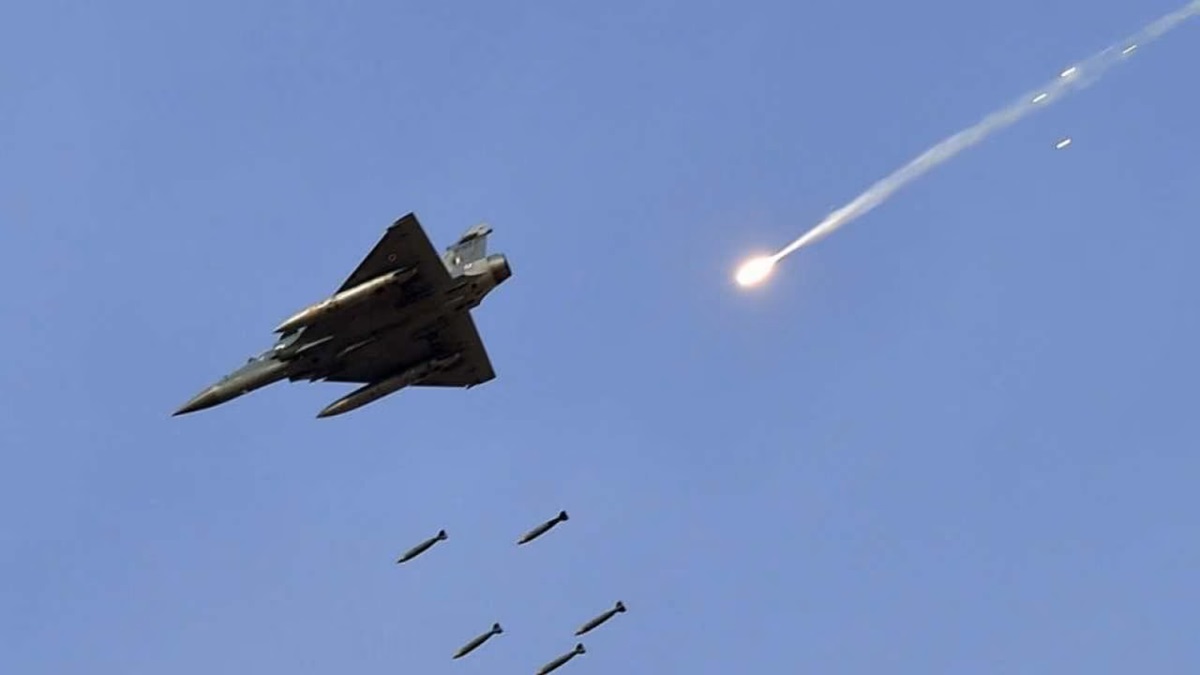 Image Source : PTI (FILE) Five years of Balakote airstrikes: A retrospective evaluation.
Image Source : PTI (FILE) Five years of Balakote airstrikes: A retrospective evaluation.
Balakote airstrikes: On February 26, 2019, India carried out a daring airstrike on a terrorist camp in Balakote, Pakistan, in response to the Pulwama assault that killed 40 Indian safety personnel. The airstrike, dubbed as “Operation Bandar”, was the primary time because the 1971 conflict that Indian warplanes crossed the Line of Control and entered Pakistani airspace. The operation was hailed as successful by the Indian authorities and media, who claimed that numerous terrorists have been killed and their infrastructure was destroyed.
Strategic implications
The Balakote airstrike was a major departure from India’s earlier responses to cross-border terrorism from Pakistan. India had avoided utilizing its typical navy superiority towards Pakistan, fearing escalation to the nuclear stage. Pakistan, then again, had relied on its nuclear deterrence to defend its help for terrorist teams working in Kashmir and elsewhere in India. The Balakote airstrike challenged this establishment and demonstrated India’s willingness to make use of drive towards Pakistan’s non-state actors, even on the threat of frightening a traditional or nuclear battle.
The Balakote airstrike additionally uncovered the constraints of Pakistan’s nuclear deterrence. Pakistan had developed tactical nuclear weapons to counter India’s typical benefit and to discourage any Indian incursion into its territory. However, the Balakote airstrike confirmed that India might strike Pakistan’s non-military targets with out crossing Pakistan’s nuclear threshold. Pakistan’s response was additionally constrained by the worldwide stress and the concern of dropping its credibility as a accountable nuclear state.
The Balakote airstrike additionally had implications for the regional and world safety atmosphere. The Balakote disaster was the primary time that two nuclear-armed states engaged in a restricted aerial battle, elevating the specter of a nuclear conflict in South Asia. The disaster additionally highlighted the function of main powers, particularly the United States and China, in managing the India-Pakistan rivalry. The United States performed a key function in de-escalating the disaster and facilitating the discharge of the Indian pilot. China, then again, tried to steadiness its strategic partnership with Pakistan and its financial pursuits with India and referred to as for restraint and dialogue between the 2 sides.
Operational implications
The Balakote airstrike additionally revealed the operational strengths and weaknesses of the Indian and Pakistani air forces. The Indian Air Force (IAF) displayed its professionalism, braveness and precision in executing the Balakote operation. The IAF used a mix of Mirage-2000 and Su-30MKI fighter jets, armed with Israeli-made Spice-2000 bombs and Russian-made R-73 missiles, to strike the Balakote camp. The IAF additionally employed digital warfare and deception strategies to evade Pakistan’s air protection programs. The Spice-2000 bombs hit their meant targets and brought on important harm to the terrorist camp.
The Pakistani Air Force (PAF), then again, confirmed its resilience, agility and readiness in responding to the Indian airstrike. The PAF scrambled its F-16 and JF-17 fighter jets, armed with American-made AIM-120 AMRAAM and Chinese-made PL-12 missiles, to intercept the Indian planes. The PAF additionally used its benefit of working from the next altitude and a shorter distance to launch a counter-attack on Indian navy installations. This was the primary time ever when any F-16 was hit by MIG-21 consequently one MIG-21 of IAF and one F-16 of PAF was shot and Wing Commander Abhinandan was captured by Pakistan.
Political implications
The Balakote airstrike additionally had political ramifications for each India and Pakistan. The airstrike boosted the recognition and credibility of Prime Minister Narendra Modi, who was dealing with a tricky normal election in April 2019. The airstrike showcased Modi’s decisive and assertive management, and his dedication to nationwide safety and sovereignty. The airstrike additionally galvanized the nationalist sentiment and the general public help for Modi and his social gathering, the Bharatiya Janata Party (BJP). The BJP gained a landslide victory within the 2019 election, securing a second time period for Modi.
The airstrike additionally had an impression on the home politics of Pakistan. The airstrike put stress on Prime Minister Imran Khan, who was dealing with an financial disaster and a political opposition. Khan needed to steadiness his response to the Indian provocation along with his agenda of peace and improvement. Khan additionally needed to handle his relations with the highly effective navy institution, which had a vested curiosity in sustaining the hostility with India. Khan tried to challenge himself as a statesman and a peacemaker, by providing dialogue and releasing the Indian pilot. A Pakistan MP in parliament had revealed that Indian Air Force Wing Commander Abhinandan Varthaman was launched over fears of an assault by New Delhi.
The profitable execution of the Balakote air strike together with the surgical strike of 2016 bolstered India’s credibility as a accountable regional energy able to safeguarding its safety pursuits. It showcased India’s navy capabilities, operational readiness, and political will to take decisive motion towards terrorist threats. This enhanced credibility fostered higher confidence amongst India’s allies and companions, strengthening regional safety cooperation and coordination.
Conclusion
The Balakote airstrike was a watershed second within the historical past of India-Pakistan relations. The airstrike marked a shift in India’s technique of coping with Pakistan’s cross-border terrorism, and challenged Pakistan’s nuclear deterrence posture. The airstrike additionally examined the operational capabilities and limitations of each air forces, and highlighted the function of main powers in managing the disaster. The airstrike additionally had political penalties for each international locations, and affected the prospects of dialogue and peace within the area. Five years after the Balakote airstrike, the teachings realized and the implications for the longer term stay related and essential.
ALSO READ: Balakot airstrikes: How Indian Air Force entered Pakistani airspace and destroyed JeM terror camps
ALSO READ: ‘I’ll always remember…’: Ex-US Secretary of State on India-Pak nuke risk post-Balakot airstrike
Source: www.indiatvnews.com




